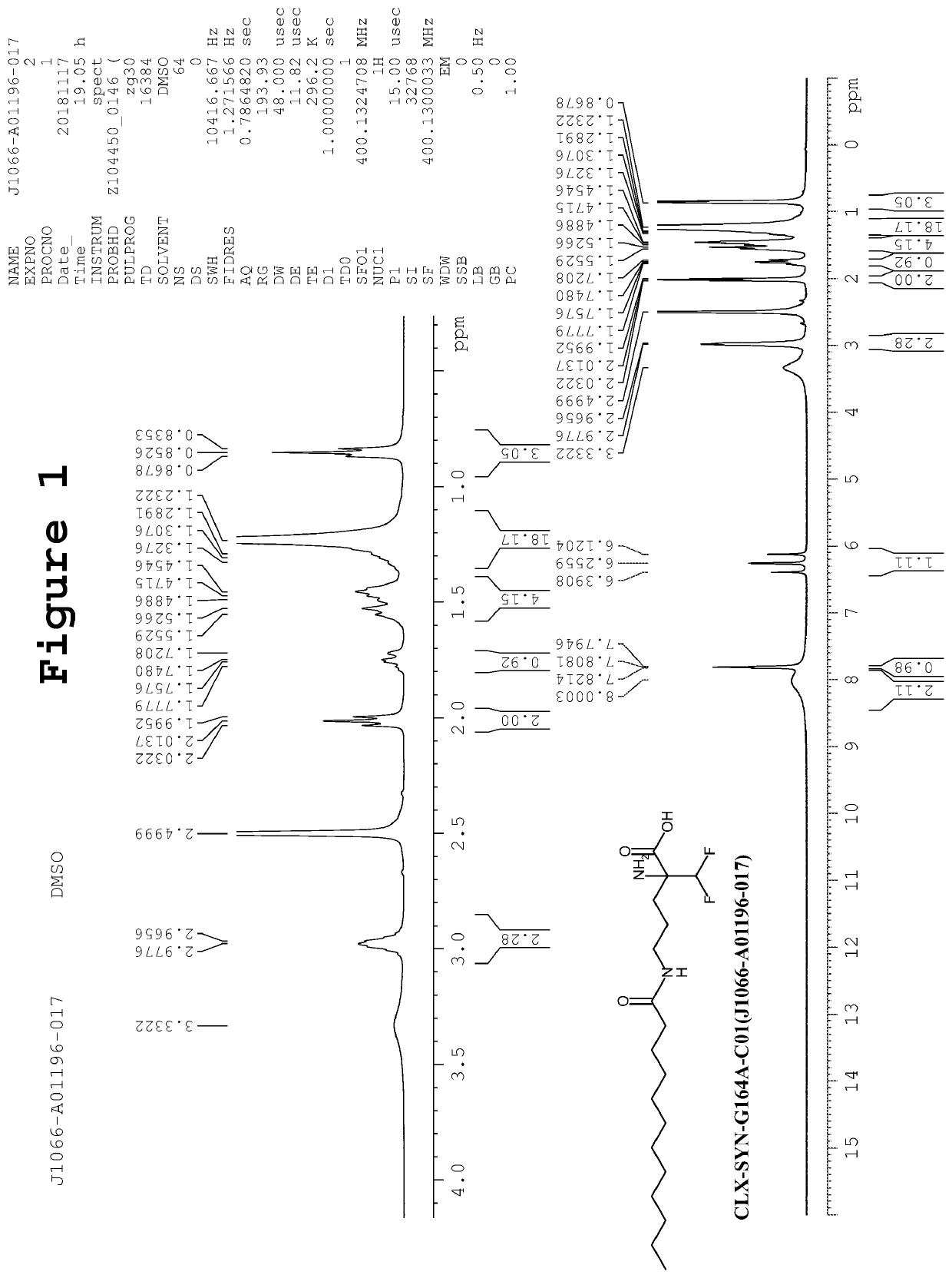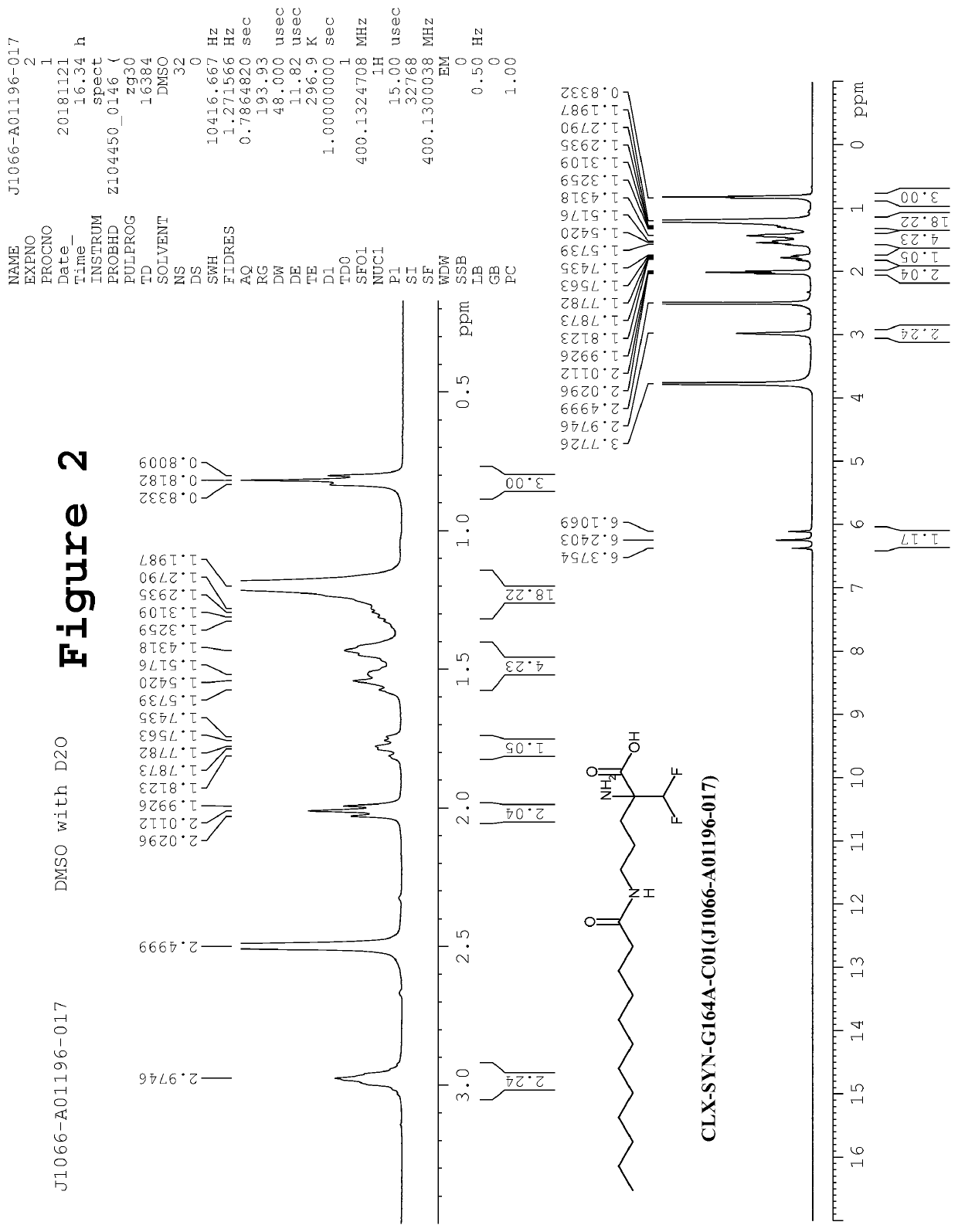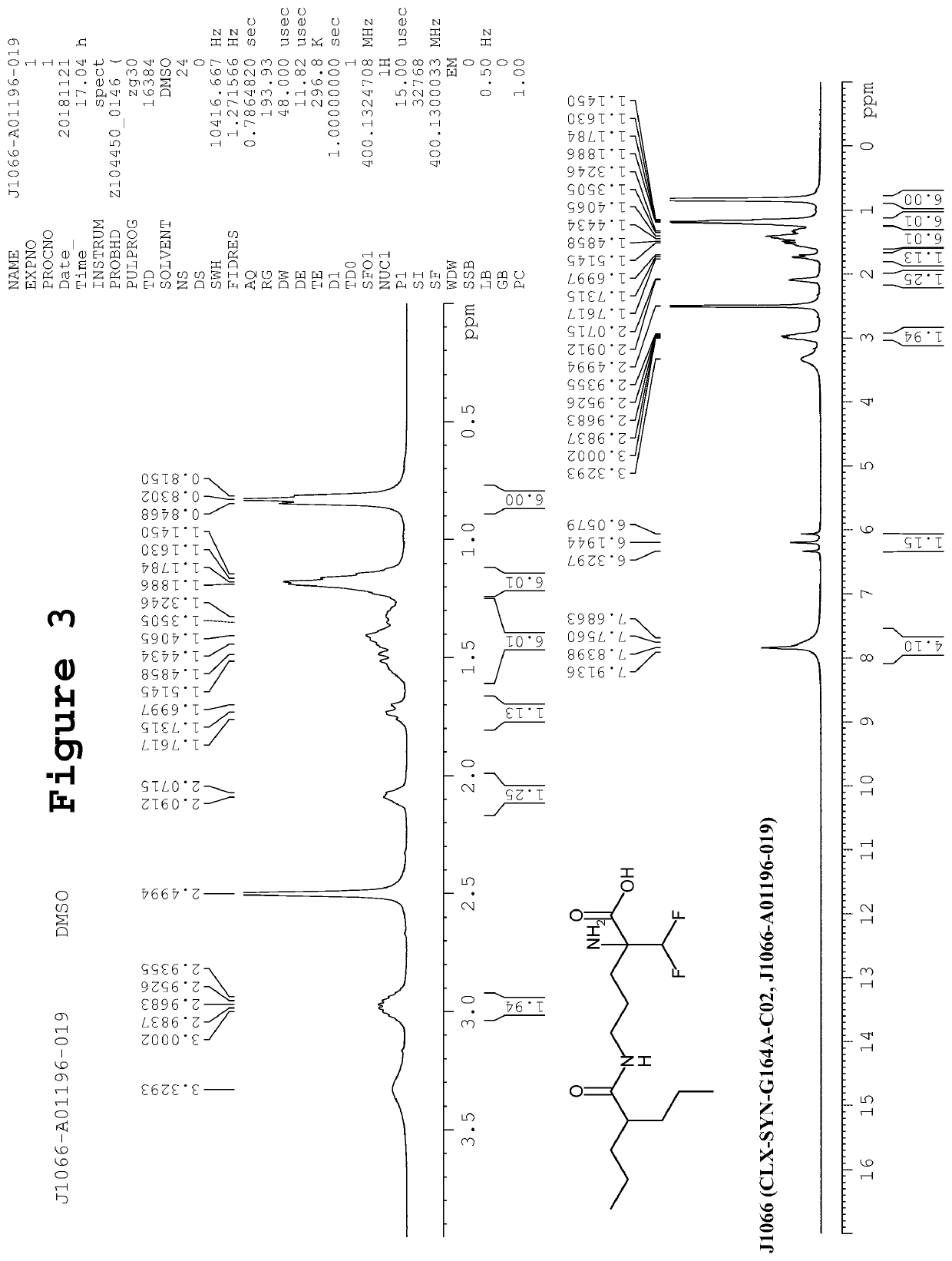Compositions and methods for the treatment of inflammatory skin diseases and cancer
a technology for applied in the field of compound and compositions for the treatment of can solve the problems of inability to complete resection, inability to treat inflammatory skin diseases and cancer, and inability to achieve true resection, so as to prevent and/or ameliorate the effects of the condition
- Summary
- Abstract
- Description
- Claims
- Application Information
AI Technical Summary
Benefits of technology
Problems solved by technology
Method used
Image
Examples
example 1
[0126]
Step-1
[0127]Synthesis of 2,5-dioxopyrrolidin-1-yl dodecanoate (7): To an ice cold stirred solution of dodecanoyl chloride (5, 80.0 g, 0.366 mol) in THF (1 L) was added Et3N (55 mL, 0.366 mol) followed by the addition of 6 (42.10 g, 0.403 mol, dissolved in 400 mL THF). The resulting reaction mixture was stirred at room temperature for next 16h. After completion of reaction (TLC monitoring), reaction mass was quenched with ice cold water (500 mL) followed by the extraction of compound with EtOAc (3×250 mL). Combined organics were washed sequentially with 1N HCl (3×500 mL), sat. NaHCO3 solution (500 mL) and brine solution (500 mL). The organic layer was separated, dried over anhydrous sodium sulfate and solvent was removed under reduced pressure. The crude was triturated with diethyl ether and pentane to afford the desired product 7 as brown solid. Yield: 65.0 g, 60%. LCMS: m / z 298.11 [M−1]; 97.65% purity.
[0128]1H NMR (400 MHz, DMSO-d6): δ 2.80 (m, 4H), 2.64 (m, 2H), 1.60 (m, 2H)...
example 2
[0130]
Synthesis of 2-amino-2-(difluoromethyl)-5-(2-propylpentanamido)pentanoic acid (CLX-SYN-G164A-C02)
[0131]To an ice cold stirred solution of 2,5-diamino-2-(difluoromethyl)pentanoic acid hydrochloride salt (8, 45.0 g, 0.190 mol) and NaOH (45 g, 0.95 mol, dissolved in 250 mL water), 2-propylpentanoyl chloride (2, 92.80 g, 0.570 mol) was added in drop wise manner. The resulting reaction mixture was stirred at room temperature for next 16h. After completion of reaction (TLC monitoring), reaction mass was quenched with ice cold water (500 mL). The pH of reaction was adjusted up to ˜3 by using 3N—HCl, followed by the extraction of compound with EtOAc (3×250 mL). Combined organics were washed sequentially with by 5% NaHCO3 solution (500 mL) and brine solution (500 mL). The organic layer was separated, dried over anhydrous sodium sulfate and solvent was removed under reduced pressure. The crude was triturated with diethyl ether and pentane to afford the desired product CLX-SYN-G164A-C02 ...
example 3
[0132]
[0133]Representative procedure: Procedure for Lipoic Acid and lysine: To the clean and dried R.B, ethanol 40 mL was charged and cooled to an internal temperature of 0˜10° C., 1 g (0.00484 mol, 1 equivalent) of (R)-α-lipoic acid was added and dissolved. 2 mL of purified water and 0.708 g (0.00484 mol, 1 equivalent) of L-lysine were added to a similar reaction container, it was also washed and dried in advance. To this ethanol additive 6 mL was added and cooled to an internal temperature of 0˜10° C. The internal temperature was maintained at 0-10° C., to a solution of α-lipoic acid, L-lysine solution was added dropwise for 10˜15 minutes and stirred for further 1 hour at the same temperature. The precipitated crystals was observed in the reaction mixture, then filtered the solid, and dried.
Procedure for Lipoic Acid and lysine: This salt was synthesized by following the representative procedure as given above.
Procedure for CLX-SYN-164-C02: Both azelaic acid lysine salt (1 equivale...
PUM
| Property | Measurement | Unit |
|---|---|---|
| thickness | aaaaa | aaaaa |
| thickness | aaaaa | aaaaa |
| density | aaaaa | aaaaa |
Abstract
Description
Claims
Application Information
 Login to View More
Login to View More - R&D
- Intellectual Property
- Life Sciences
- Materials
- Tech Scout
- Unparalleled Data Quality
- Higher Quality Content
- 60% Fewer Hallucinations
Browse by: Latest US Patents, China's latest patents, Technical Efficacy Thesaurus, Application Domain, Technology Topic, Popular Technical Reports.
© 2025 PatSnap. All rights reserved.Legal|Privacy policy|Modern Slavery Act Transparency Statement|Sitemap|About US| Contact US: help@patsnap.com



